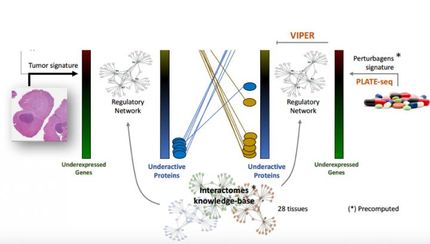The chameleon in the stomach
The bacterium Helicobacter pylori is linked to increased risk of stomach cancer, and is genetically highly variable
Advertisement
A new study by LMU researchers explores the role played by this diversity in the early phase of infection in adult humans.

Symbolic image
Photo by Ante Hamersmit on Unsplash
It is estimated that about half of the world’s population is infected with the bacterium Helicobacter pylori. Most primary infections occur in childhood. In many cases, it causes no overt symptoms in the human host, although it can give rise to a variety of gastrointestinal problems. However, if the infection becomes chronic, approximately 1% of its victims go on to develop stomach cancer. One of the most striking features of the pathogen is the range of its genetic variability, which makes it highly adaptable. – Moreover, as a new report now shows, this versatility becomes apparent within weeks of the initial infection. Led by Professors Sebastian Suerbaum and Christine Josenhans of LMU’s Max von Pettenkofer Institute, the study appears in the online journal mbio.
The researchers were able to make use of a unique set of samples obtained in the course of a vaccine trial performed in collaboration with colleagues from the Max Planck Institute for Infection Biology in Berlin in which adult volunteers were infected with H. pylori. Ten weeks later, bacterial samples were isolated from two different regions of the stomach in each case, and the donors were then treated with antibiotics to eliminate the pathogen. Complete genome sequences of single-cell isolates obtained from these samples were determined using state-of-the-art single-molecule, real-time (SMRT) sequencing methods and compared with that of the H. pylori strain with which the volunteers had been infected nearly 3 months previously.
The results revealed that the bacterial genomes had undergone a surprising degree of diversification within this relatively short time span. Many of the mutations detected were located in genes that are directly involved in molecular interactions between the pathogen and host cells. The set of proteins affected included polypeptides that are expressed on the cell wall of the bacterium, as well as transport proteins that are found in its outer membrane. These findings suggest that specific genes are being positively selected to enable the bacterium to exploit metabolites that are available in different cellular niches in the lining of the stomach. In addition to these genetic mutations (which alter gene products), the authors noted a variety of epigenetic changes (which alter gene regulation) in the bacterial DNA during the early phase of infection. H. pylori possesses many enzyme systems that attach methyl groups to specific DNA sequences. The authors identified 24 such systems, and at least some of these may serve to regulate the expression of sets of genes in the bacterium. These results further support the notion that alterations in gene products and patterns of gene activity during the weeks and months following the primary infection play an important role in enabling the bacterium to adapt to, and become established in different niches in the stomach.


























































